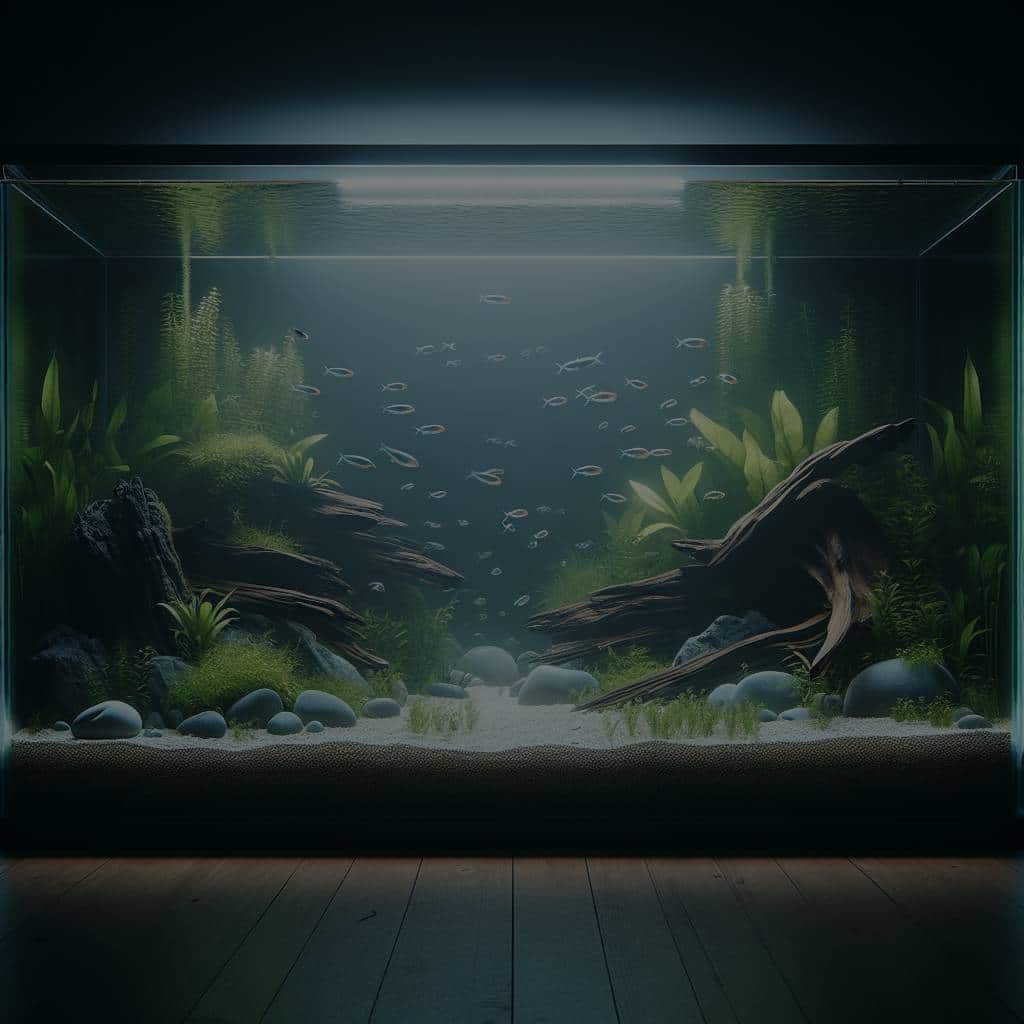Neon tetras are popular freshwater aquarium fish known for their vibrant colors and ease of care. Their name comes from the iridescent blue horizontal stripe that runs from their nose to the base of the adipose fin, and the iridescent red that covers from the base of their caudal fin to their adipose. However, when it comes to breeding these small, lustrous creatures, the task can prove to be more challenging. A variety of specific conditions are required to successfully breed neon tetras and properly care for their eggs and fry. This article guides you through those necessary conditions and provides practical tips to ensure successful neon tetra breeding.
Understanding Neon Tetras and Their Basic Care
Neon Tetras, often simply referred to as tetras, are one of the most well-known species in the aquarium hobby. These small, colorful fish are a favorite amongst both beginner and experienced aquarists due to their peaceful nature and easy adaptability. But before embarking on the journey of breeding them, it’s crucial to understand their basic care and environmental needs.
In the same genre : What’s the Most Effective Way to Teach a Parrot to Use Puzzle Toys?
Tetras thrive in water conditions similar to their natural habitat – soft, acidic, and warm. The aquarium should be kept at a temperature between 70°F and 81°F (21°C to 27°C) with pH levels around 5.0 to 7.0. Constant monitoring of the water quality is crucial; sudden changes can lead to stress, disease, and even death.
When it comes to feeding, tetras are omnivores and enjoy a varied diet including flake food, frozen food, and live food like brine shrimp. It’s always best to feed them small amounts multiple times a day as opposed to one large feeding.
Also to discover : How Can You Create an Enriched Environment for an Arthritic Senior Rabbit?
Preparing the Aquarium for Breeding
Breeding neon tetras requires a bit more consideration than regular care. The first step is setting up a dedicated breeding tank. This tank should be smaller than your main aquarium, typically around 10 gallons. It’s important to maintain dim lighting in the breeding tank, as neon tetras naturally breed in dark conditions.
The breeding tank should be filled with soft, acidic water, similar to the tetras’ natural habitat. Peat moss or blackwater extract can be added to achieve this. It’s also beneficial to include live plants, as they provide a natural environment and offer shelter for the tiny fry.
Conditions for Spawning
Once the breeding tank is set up, it’s time to prepare your neon tetras for spawning. A pair of healthy, mature tetras should be introduced into the breeding tank. They are usually ready to breed when they are about six months old and display vibrant colors.
To encourage spawning, gradually increase the water temperature to about 77°F (25°C). Additionally, the fish should be well-fed with high-quality, protein-rich food like live brine shrimp. It’s also essential to maintain dim lighting conditions, as tetras prefer to spawn in the dark.
When the conditions are right, the female will lay hundreds of tiny, transparent eggs, which the male will then fertilize.
Caring for the Eggs and Fry
Post-spawning, remove the parent fish to prevent them from eating the eggs. The eggs will hatch in around 24 hours, releasing tiny fry that will initially feed on their yolk sacs.
The fry are almost invisible during the first few days, so avoid any tank maintenance during this period to prevent accidental harm. Once the fry start to swim freely and their yolk sacs are consumed (usually around four to five days), they can be fed infusoria or newly hatched brine shrimp.
Ensuring Healthy Growth of Neon Tetras
Following the initial feeding, the fry can be gradually introduced to powdered fry food and micro-worms. They will grow rapidly, and in about ten weeks, neon tetras will have their full adult colors.
It’s important to keep an eye on the water parameters during this growth period. Any drastic changes in the temperature or pH could be harmful. Regular partial water changes are also crucial for maintaining good water quality.
In conclusion, while breeding neon tetras involves careful planning and meticulous care, the sight of a home-raised, shimmering school of neon tetras makes it all worthwhile.
Dealing with Possible Neon Tetra Disease and Picking Suitable Tank Mates
Breeding neon tetras, scientific name Paracheirodon innesi, isn’t just about the optimal breeding conditions. It’s equally important to be aware of potential health risks like neon tetra disease and to choose suitable tank mates for your tetras.
Neon tetra disease is a common ailment that can pose a significant threat to your breeding efforts. It’s caused by a microsporidian parasite Pleistophora hyphessobryconis. The disease affects the fish’s ability to swim, results in loss of color, and can eventually lead to death. Unfortunately, there is no known cure for this disease, so prevention is paramount. This involves maintaining optimal water conditions, feeding a balanced diet, and promptly isolating any fish showing signs of illness.
Moving on to tank mates, neon tetras are peaceful fish species that do well in a community tank. However, choosing the right tank mates is crucial to avoid aggressive fish that could stress the tetras or eat the fry. Suitable tank mates include other small, peaceful species like guppies, mollies, and dwarf cichlids. Avoid large or predatory species that could view the tetras as food.
Maintaining Optimal Water Quality and Concluding Tips
Maintaining optimal water quality is an ongoing task for any aquarist, particularly those looking to breed neon tetras. Water parameters like temperature, pH, and hardness should be kept within the desired ranges. Regular testing of the water can help achieve this.
A 10 to 20 percent water change every week is a good practice to keep the water fresh. Furthermore, the use of an effective filter can help in managing the water quality. It’s also crucial to remove any uneaten food or waste promptly to prevent water pollution.
In summary, breeding neon tetras is a detailed and meticulous process that requires a dedicated approach from the aquarist. The process involves setting up a proper breeding tank, understanding neon tetra disease, selecting appropriate tank mates, and maintaining high water quality. However, the ultimate reward of watching a thriving, home-bred school of neon tetras is indeed a sight to behold for any fish enthusiast.
Remember, the key to successfully breeding these vibrant fishes lies in replicating their natural environment as closely as possible and providing them with a stress-free and healthy living condition. Following these guidelines mentioned above, any aquarists, whether a beginner or experienced, can successfully breed neon tetras in their home aquarium.






